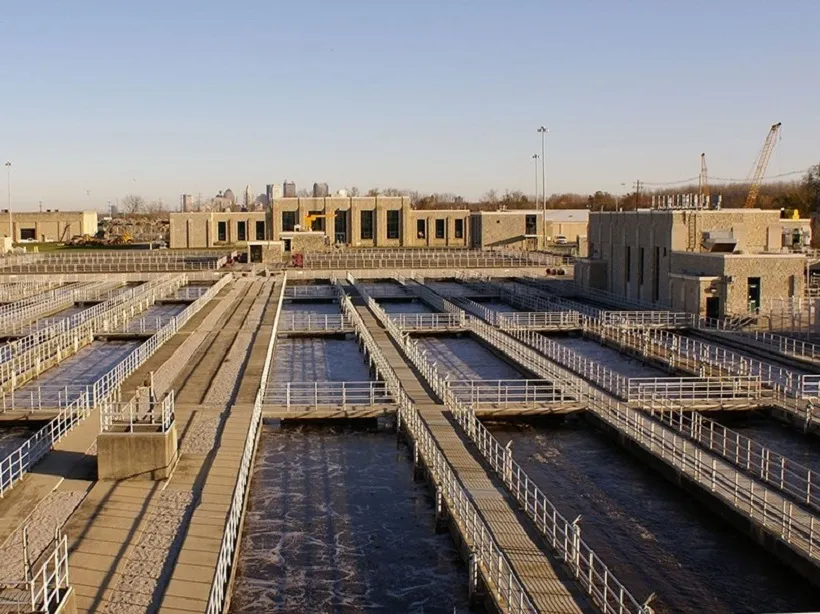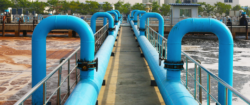
Columbus Jackson Pike Wastewater Treatment Plant and Sewers

Water is an invaluable resource, essential to both ecological balance and human health. It is within this context that wastewater treatment facilities downtown play a crucial role. One notable example is the Columbus Jackson Pike Wastewater Treatment Plant (WWTP), a monumental facility in Ohio that has been serving the local population for decades. This article dives deep into the specifics of the plant, the community it serves, its capacity, recent developments, key projects, and its engagement with the community.
A Historical Overview
The Columbus Jackson Pike Wastewater Treatment Plant has been a staple in the city’s environmental infrastructure since its establishment. Evolving over the years with technological advancements, the plant represents both a rich history and a symbol of ongoing commitment to sustainable development.
Population Served and Capacity
This central Ohio facility caters to the wastewater treatment needs of the Columbus metropolitan area, which has a population of approximately 2 million residents. The plant is designed to handle about 68 million gallons of wastewater per day (MGD) on average. However, its infrastructure is robust enough to handle peak flows of up to 120 MGD, especially during extreme weather conditions when stormwater may overwhelm regular sewer systems.
Volume and Treatment Capacity
On any given day, the Columbus Jackson Pike WWTP effectively processes over 75 million gallons of wastewater. This sheer volume conveys the plant’s enormity and essential role in maintaining public health and the environment. The treatment process involves several stages, including preliminary treatment, primary treatment, secondary treatment, and tertiary treatment, to remove contaminants thoroughly.
-
- Preliminary Treatment: The initial stage involves screening large debris and grit removal. This is crucial to prevent damage to subsequent treatment processes.
-
- Primary Treatment: Here, wastewater flows into sedimentation tanks, where heavy solids settle at the bottom.
-
- Secondary Treatment: Biological processes are utilized to break down organic matter, often employing activated sludge methods.
-
- Tertiary Treatment: This final phase ensures the removal of remaining contaminants and often involves advanced filtration mechanisms, disinfection via chlorination or UV light, and the removal of nutrients like nitrogen and phosphorus.
Recent Local News
In recent years, Columbus Jackson Pike WWTP has been under the local lens for several reasons. A noteworthy incident involved the plant being recognized for its exemplary handling of heavy stormwater influx during the unprecedented rainfall in 2022. With rivers at risk of flooding, the plant’s strategic planning and advanced systems helped prevent potential discharge of untreated wastewater, showcasing its reliability and advanced preparedness.
On the other hand, climate change has posed new challenges. Increased rainfall and storm events have raised concerns about the plant’s capabilities, prompting city officials to invest significantly in infrastructure upgrades. This has led to several new projects aimed at expanding capacity and improving resilience against future climate-related impacts.
Key Projects: Building for the Future
To adapt to growing population demands and climate challenges, various key projects are currently in the pipeline or have been recently completed:
1. Capacity Expansion Project
Due to burgeoning urban developments and increased average daily wastewater flow, the plant is undergoing a multi-million dollar capacity expansion. This involves constructing additional sedimentation tanks, secondary treatment units, and biosolid treatment facilities. The completion of this project is anticipated by 2025, adding 20 MGD to its existing capacity.
2. Nutrient Removal Upgrade
Nutrient pollution, particularly from phosphorus and nitrogen, can significantly degrade water quality in surrounding rivers and lakes. In a proactive move to combat this, the plant has implemented an advanced nutrient removal system. Utilizing biological nutrient removal (BNR) techniques, these upgrades will ensure the discharged water meets stringent environmental standards.
3. Resilience and Flood Defense
Recognizing the increased risk of flooding due to climate change, substantial investments have been made in fortifying the plant against potential flood events. These include raised levees, enhanced pumping systems, and integration of real-time monitoring technologies to predict and respond to flooding events more efficiently.
4. Green Infrastructure Initiatives
Sustainability isn’t only about processing capacity; it’s also about incorporating eco-friendly practices. The plant has initiated several green infrastructure projects, including the creation of constructed wetlands and the installation of permeable pavements to manage stormwater naturally. These measures contribute to reducing the burden on the sewer system during peak flows.
5. Energy Efficiency and Renewable Energy
An ambitious plan is in place to make the Columbus Jackson Pike WWTP one of the most energy-efficient wastewater facilities in the nation. By integrating biogas recovery systems and solar panels, the plant aims to generate a significant portion of its energy needs on-site, thereby reducing carbon emissions.
Community Engagement: Fostering Transparency and Collaboration
The Columbus Jackson Pike WWTP has not only focused on technical advancements but also places a strong emphasis on community engagement. In maintaining transparency and fostering a collaborative relationship with the residents, the plant has undertaken several initiatives:
1. Public Tours and Educational Programs
Open days and guided tours have become a staple activity, aimed at educating the community about the importance of wastewater treatment and the robustness of the processes involved. School groups, local clubs, and interested residents are encouraged to visit and gain insight into the plant’s operations.
2. Citizen Advisory Committees
To ensure that the plant’s operations align with community expectations, a Citizen Advisory Committee (CAC) has been established. This committee comprises local residents, industry experts, and environmental advocates who meet regularly to discuss ongoing projects, raise concerns, and provide recommendations.
3. Public Consultations
Before embarking on major projects, public consultations are held to gather feedback and address potential concerns. This participatory approach ensures that community voices are heard and incorporated into the plant’s plans, promoting a sense of ownership and trust among residents.
4. Digital Transparency
Leveraging technology, the Columbus Jackson Pike WWTP has made significant strides in digital transparency. A dedicated website and social media channels provide regular updates, project progress reports, and real-time data on plant performance and environmental impact. This digital presence ensures that the community remains informed and engaged.
Conclusion: A Legacy of Environmental Stewardship
The Columbus Jackson Pike Wastewater Treatment Plant stands as a beacon of environmental stewardship and public health advocacy. Through its advanced treatment processes, ongoing capacity enhancements, and strong community engagement, the plant plays an indispensable role in safeguarding the health of Columbus residents and the local ecosystem.
As urbanization continues to intensify and climate change poses new challenges, the plant’s adaptive strategies and forward-thinking projects underscore its commitment to sustainability. By fostering a transparent, collaborative relationship with the community, the Columbus Jackson Pike WWTP not only addresses today’s wastewater treatment needs but also lays a solid foundation for future generations to thrive in a clean and healthy environment.
In sum, the Columbus Jackson Pike WWTP exemplifies the symbiotic relationship between advanced technological infrastructure and community engagement, charting a path towards a more sustainable and resilient urban future.


